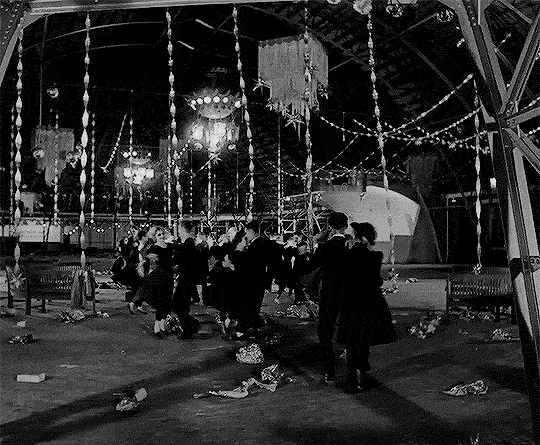Rinkydink
On the grim farce of Carnival of Souls

Peter Rainer, in a 1990 LA Times review of Carnival of Souls, called the film rinkydink. Which isn’t untrue: there’s an amateurishness to much of Carnival—much that jars, that feels wrong or off or otherwise not right. As Rainer argues, the film’s remarkable potency derives from the elements that produce this particular quality. Everything is out of plumb, nothing is set quite true. If it wasn’t rinkydink, it wouldn’t work.
It’s one of the most powerful depictions of dissociation I think I’ve ever seen. The rinkydinkiness works like a kind of alienation effect, preventing or frustrating viewer-immersion in the storyworld in a direct mirror of the way Mary Henry’s trauma prevents her engaging in her life. The bizarre dubbing, in particular, produces a deeply eerie sense of distantiation. Under the force of depression, dissociation, alienation, etc., the world becomes absurd, becomes the kind of grim farce of which Thomas Ligotti is the poet laureate. It becomes rinkydink. The pavilion to which Mary (played by Candace Hilligoss, who is brilliant) is drawn, the carnival, is rinkydink—what could be more rinkydink than a carnival? (What could be more Ligottian?)
The specifics of Henry’s trauma concern her relationships with men. In this the film seems amenable to two contrary interpretations, both a feminist reading and a misogynist reading. The latter would find grist in Mary’s apparent soullessness, her selfishness: she only takes the church organist job because she wants the money—she doesn’t believe. Does her alienation, then, consist in her selfishness—a single woman, without family, without children, uninterested in men? At the same time, that alienation stems from the traumatic incident that sets the film in motion. The car crash in the first scene, in which Mary’s friends die and which she somehow survives, is caused by a group of men in another vehicle. (I think of Julie Harris’s performance as Eleanor Vance in The Haunting, another traumatised woman whose fate is bound up with the symbol of the automobile and its chain of associations: petro-modernity, individual freedom, the Freudian death drive.) Then there’s the male doctor. The priests. Most notably, there’s the deeply odd figure of the Man, the ghoul who Mary sees everywhere. The most naturalistic, ‘believable’ aspect of the film might be the performance of Sidney Berger as John Linden, Mary’s neighbour across the hall, as a wheedling creep. I suspect most women have met a Linden.
I rewatched the original Candyman a while ago, and it seemed a lot ropier than I remembered. Perhaps that’s the fate of every film. As styles change, as the registers of professional film-making change, perhaps every film becomes, at last, somehow rinkydink.
In this respect, it’s interesting to encounter films that, though decades old, remain contemporary still, that haven’t yet succumbed to rinkidinkiness. A few I can think of, off the top of my head: Threads, The Exorcist, Don’t Look Now.
Other films watched recently: Pet Semetary, Salem’s Lot. Both utterly rinkydink, though not without a certain potency. My girlfriend and I watched The Blood on Satan’s Claw the other day, and that was a lot less rinkydink than I had expected.
A judgement, I should note, with which Sarah disagreed.